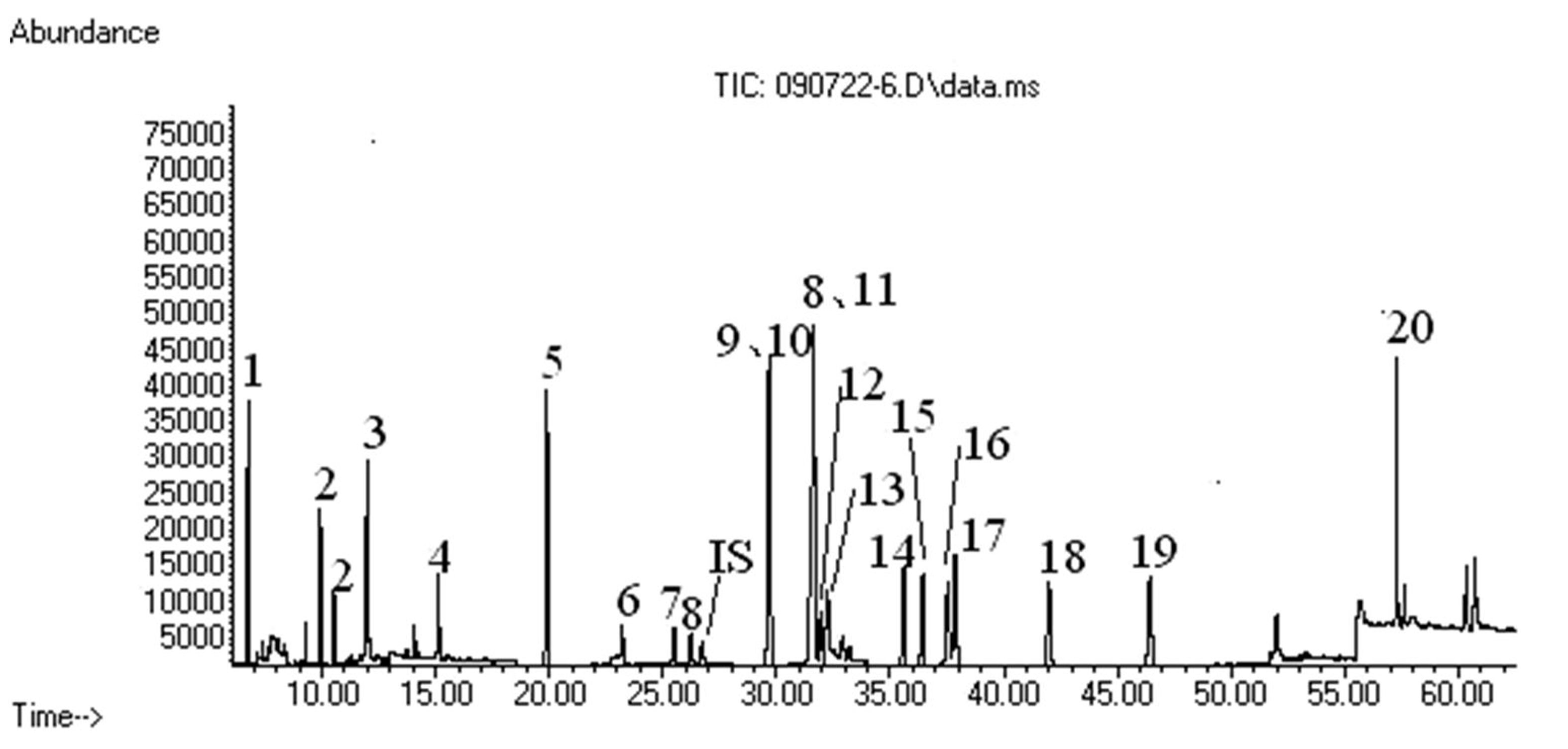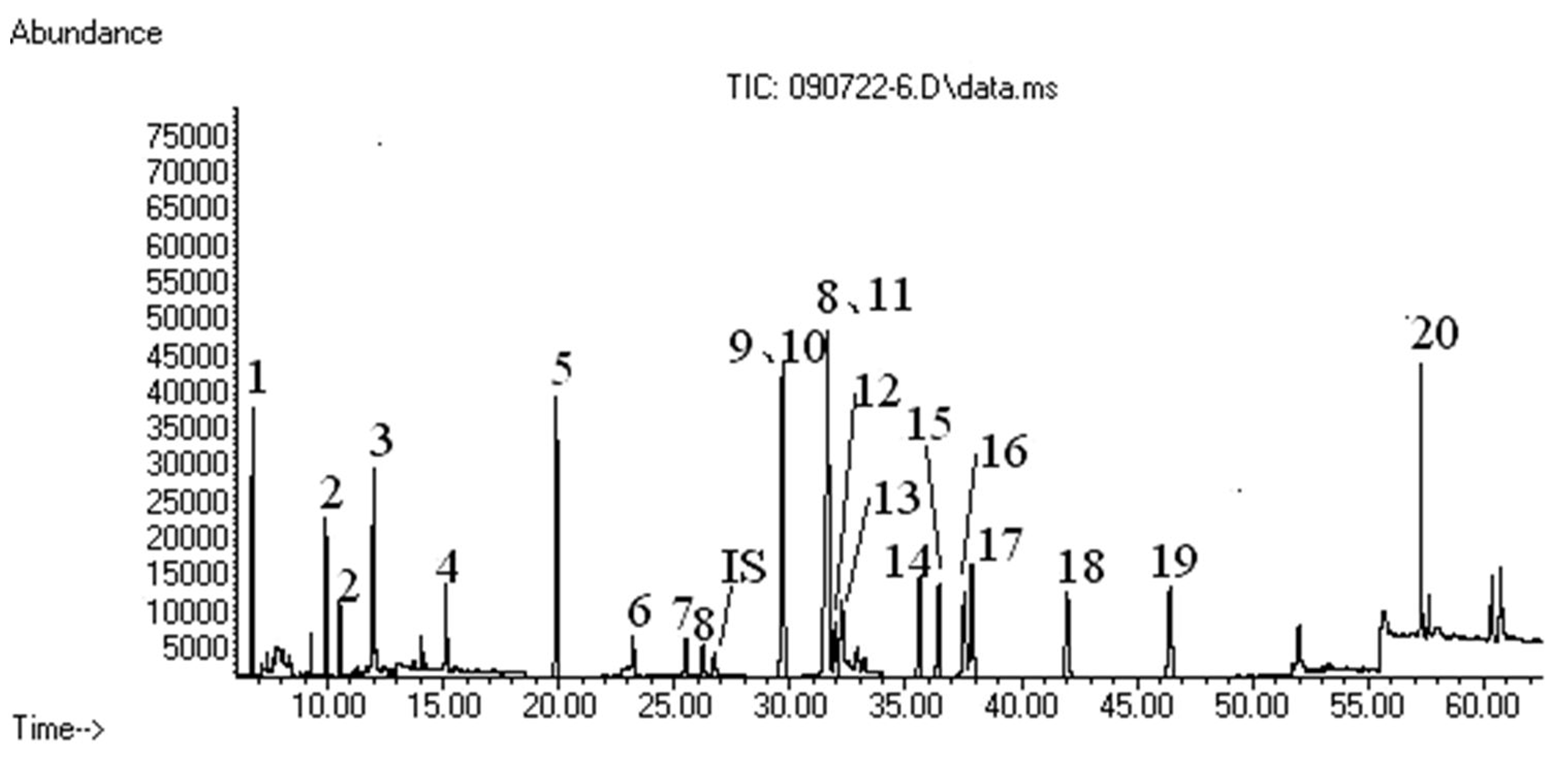Method for detecting organophosphorus pesticide residue in tobacco
A technology for organophosphorus pesticides and residues, applied in measuring devices, preparation of test samples, instruments, etc., can solve problems such as difficulty in improving extraction efficiency, cumbersome pretreatment steps, loss of analysis objects, etc., and achieve simple and easy processing steps , good accuracy, and the effect of improving accuracy
- Summary
- Abstract
- Description
- Claims
- Application Information
AI Technical Summary
Problems solved by technology
Method used
Image
Examples
Embodiment Construction
[0032] 1. The detection method of the present invention will be described in detail below in conjunction with specific embodiments.
[0033] The detection method of the present invention relates to 20 kinds of organophosphorus pesticides: dichlorvos, memethaphos, acephate, clomiphos, terbuthion, diphorate, isomydazole, phosphamide, chlorpyrifos methyl, Phytophos, tolclofos-methyl, parathion-methyl, anthion, fenitrothion, parathion-ethyl, pirimiphos-ethyl, brothion-thion, bromthion-ethyl, chlorprophos, parathion cotton phosphorus. The detection method of the present invention uses chlorazophos as an internal standard, and specifically comprises the following steps:
[0034] 1) Preparation of mixed standard solution:
[0035] Accurately weigh 0.1g of 20 kinds of organophosphorus pesticide standard substances in the same 100ml volumetric flask, and obtain the mixed standard stock solution A by constant volume with acetone, accurately pipette 1ml of the mixed standard stock solu...
PUM
 Login to View More
Login to View More Abstract
Description
Claims
Application Information
 Login to View More
Login to View More - R&D
- Intellectual Property
- Life Sciences
- Materials
- Tech Scout
- Unparalleled Data Quality
- Higher Quality Content
- 60% Fewer Hallucinations
Browse by: Latest US Patents, China's latest patents, Technical Efficacy Thesaurus, Application Domain, Technology Topic, Popular Technical Reports.
© 2025 PatSnap. All rights reserved.Legal|Privacy policy|Modern Slavery Act Transparency Statement|Sitemap|About US| Contact US: help@patsnap.com


